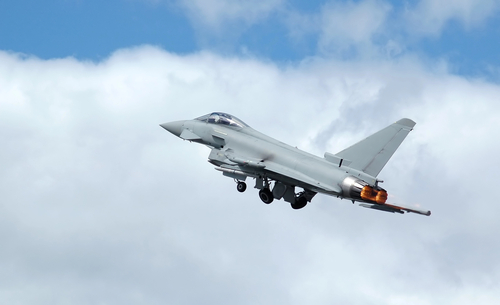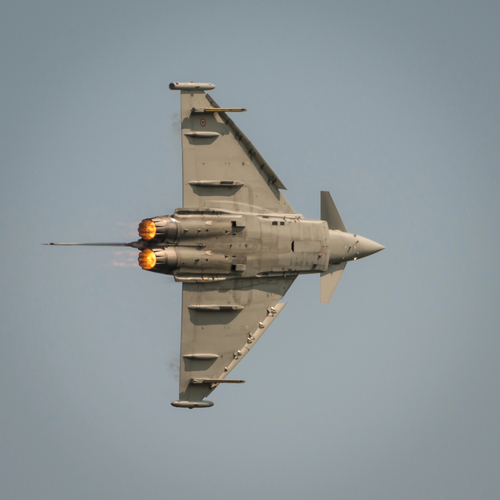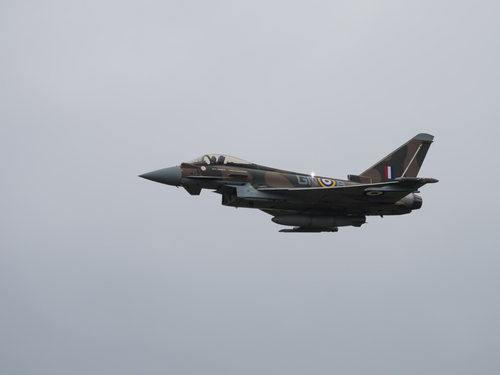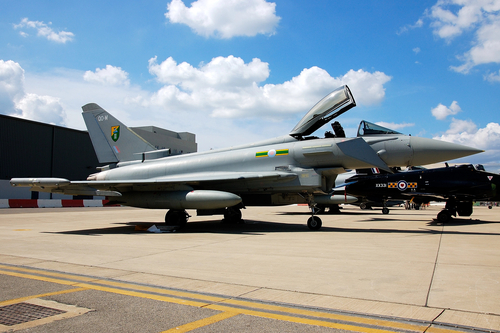
NATO Secretary General Jens Stoltenberg recently ascended to the skies in a German Eurofighter Typhoon, a testament to the strategic importance of the aircraft in European defense.

The flight, described by Stoltenberg as “a great experience,” took place at the Tactical Air Wing at Laage Air Base near Rostock, underscoring the critical role of air policing missions in today’s challenging security environment.

Stoltenberg’s airborne venture highlights the Eurofighter Typhoon’s position as one of Europe’s principal defenders, with advanced technology and formidable capabilities in air combat.

Developed by a consortium of Germany, Italy, the UK, and later joined by Spain, the Typhoon features stealth characteristics and a powerful armament, including an internal 27mm Mauser cannon and an array of missiles.

The NATO leader’s flight comes at a time when Germany, acknowledged by Stoltenberg as Ukraine’s biggest military donor in Europe, has furthered its support by committing an additional Patriot missile system to the embattled nation.

This move reflects NATO’s unified approach to security, a stance that has been strengthened under Stoltenberg’s leadership, with the alliance experiencing the most significant reinforcement of collective defense since the Cold War.

As part of this defense strategy, six Royal Air Force (RAF) Eurofighter Typhoons were deployed to Romania’s Mihail Kogălniceanu Air Base for NATO’s enhanced Air Policing mission.

The deployment marks three decades since the Typhoon’s inaugural flight and its enduring frontline role. This effort is the RAF’s fifth in Romania since 2014, a clear indication of NATO’s commitment to protecting its airspace against security threats, particularly in response to Russia’s actions in Crimea.

The Typhoon’s capabilities were recently exhibited in gripping cockpit footage, giving the public a rare glimpse into the high-stakes operations of RAF Top Gun pilots.

The video showcases the Typhoons trailing and intercepting Russian military aircraft, including the ‘Flying Kremlin,’ a mobile command center for Russian leadership in a nuclear scenario.

This real-life ‘Top Gun’ scenario underscores the swift and vigilant defense posture maintained by NATO forces.

Operating out of bases like Estonia’s Amari Airbase, RAF pilots engage in Quick Reaction Alert (QRA) missions, scrambling to intercept any potential threats to NATO’s borders.

These pilots, whose tradition of air defense harkens back to the Battle of Britain, ensure a constant state of readiness, contributing to the alliance’s deterrence capacity and cohesiveness.

As tensions persist, the Eurofighter Typhoon, with its three decades of technological evolution and combat readiness, stands as a symbol of NATO’s enduring vigilance and capability.

The aircraft’s regular patrols and interceptions—peacetime operations with wartime readiness—serve as a firm reminder of the alliance’s resolve to secure the skies and maintain strategic stability in an ever-changing global landscape.

